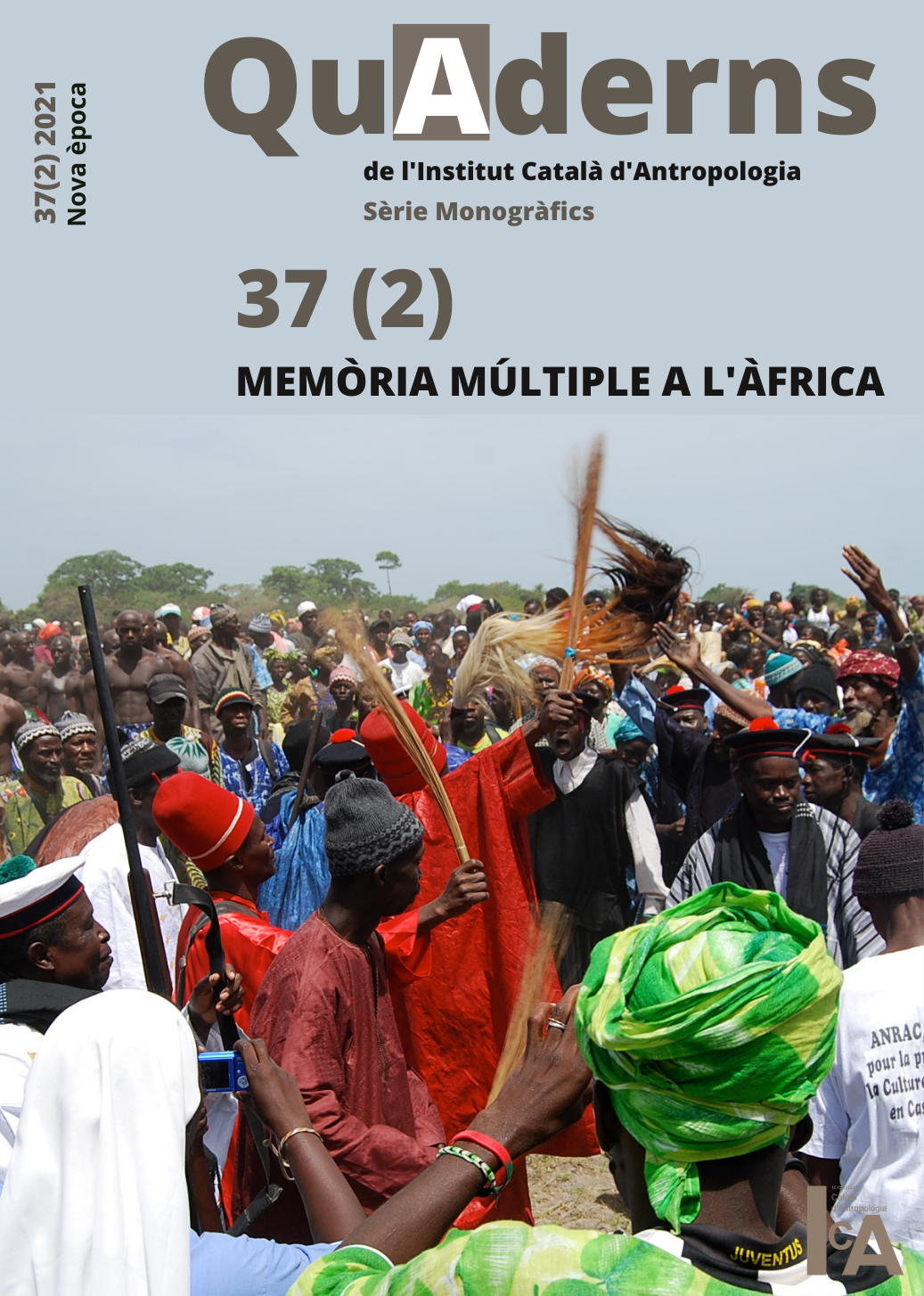The project and the path. Practices against architecture in the Basque rural environment
DOI:
https://doi.org/10.56247/qua.373Keywords:
architecture, patrimonialization, self-construction, ontology, house, Basque CountryAbstract
The objective of this article is to show a conflict between two ways of doing and thinking —which, we could say, coincide with differential instaurations of being— in relation to the construction of the house in the Araotz valley, in the Basque rural environment. The first one, the project, consists of a procedure through which it is possible to institute a certain imaginary reality that does not coincide with the materiality of what has been built; the second, the path, is recognized as a trial and error activity that integrates a multitude of agents and inferences and during which a complex dialogue between the virtual and the concrete takes place. That way, I suggest that the self-construction of the villages in Araotz involves an epistemic tension caused by the development of certain practices of statalization related to architecture and heritage. In this sense, I will show how the construction paths that devise the inhabitants/builders of these houses constitute in many cases a response to the projection and its effects, something that can be formulated as a counter-architectural and/or a counter-heritage practice.
Downloads
Global Statistics ℹ️
|
377
Views
|
268
Downloads
|
|
645
Total
|
|
References
Alonso González, P. (2017). El antipatrimonio: Fetichismo y dominación en Maragatería. CSIC.
Apaolaza Beraza, J. M. (1981). El baserritarra en la fábrica. Ethnica: revista de antropología, 17, 51-62.
Augustins, G. (1989). Comment se perpetuer?: Devenir des lignées et destins des patrimoines dans les paysanneries européennes. Société d’ethnologie.
Beltran, O. y Santamarina, B. (2016). Heritage and Knowledge: Apparatus, Logic and Strategies in the Formation of Heritage. Anthropological Forum, 26(4), 397-414. DOI: https://doi.org/10.1080/00664677.2016.1224763
Collins, J. F. (2015). Revolt of the saints: Memory and redemption in the twilight of Brazilian racial democracy. Duke University Press. DOI: https://doi.org/10.1515/9780822395706
del Mármol, C. (2010). Pasados locales, políticas globales. Procesos de patrimonialización en un valle del Pirineo catalán [Universitat de Barcelona].
Douglass, W. A. (1973). Death in Murelaga: Funerary ritual in a Spanish Basque village. University of Washington Press.
Douglass, W. A. (1975). Echalar und Murelaga: Opportunity and rural exodus in two Spanish Basque villages. C. Hurst.
Edensor, T. (2011). Entangled Agencies, Material Networks and Repair in a Building Assemblage: The Mutable Stone of St Ann’s Church, Manchester. Transactions of the Institute of British Geographers, 36(2), 238-252. DOI: https://doi.org/10.1111/j.1475-5661.2010.00421.x
Etxezarreta, M. (1977). El caserío vasco? Elexpuru Hermanos. Decreto 322/1998, de 24 de noviembre, por el que se adapta el expediente de declaración de la Torre Zumeltzegi de Oñati a las prescripciones de la Ley 7/1990, de 3 de julio, del Patrimonio Cultural Vasco, como Bien Cultural Calificado, con la categoría de Monumento (1998).
Fernández de las Heras, I. (2018). Formas do parentesco: Grafismo e enunciação no Vale de Araotz (País Basco). Campos - Revista de Antropologia, 18(1-2), 139-154. DOI: https://doi.org/10.5380/cra.v18i1-2.47244
Fernández de las Heras, I. (2020). La Casa en Llamas. Relacionalidad y estatalización en un valle del País Vasco [Universidad Complutense de Madrid].
Greenwood, D. (1976). Unrewarding wealth: The commercialization and collapse of agriculture in a Spanish Basque town. Cambridge University Press.
Greenwood, D. (1996). Adiós al caserío. biTARTE Revistra cuatrimestral de Humanidades, 8, 5-21.
Hernández León, J. M. (2013). Autenticidad y monumento: Del mito de Lázaro al de Pigmalión. Abada.
Herzfeld, M. (1991). A place in history: Social and monumental time in a Cretan town. Princeton University Press. DOI: https://doi.org/10.1515/9781400843312
Jones, S. y Yarrow, T. (2014). ‘Stone is stone’: Engagement and detachment in the craft of conservation masonry. Journal of the Royal Anthropological Institute, 20(2), 256-275. DOI: https://doi.org/10.1111/1467-9655.12103
Kirshenblatt-Gimblett, B. (2004). Intangible Heritage as Metacultural Production. Museum International, 56(1-2), 52-65. DOI: https://doi.org/10.1111/j.1350-0775.2004.00458.x
Latour, B. (2011). On the modern cult of the factish gods. Duke University Press.
Mol, A. (2002). The body multiple: Ontology in medical practice. Duke University Press. DOI: https://doi.org/10.1215/9780822384151
Montesinos Llinares, L. (2013). IRALIKU’K: La confrontación de los comunales. Etnografía e historia de las relaciones de propiedad en Goizueta [Universitat de Barcelona].
Montesinos Llinares, L. (2017). La crisis del caserío vasco y del sistema de herencia indivisa. En D. Martínez Zorriya y M. Vial-Dumas, Las múltiples caras de la herencia (pp. 45-71). Huygens.
Navas Perrone, M. G. (2016). Utopía y privatopía en la Vila Olímpica de Barcelona: Los impactos sociales de un barrio de autor. [Universitat de Barcelona].
Paliza Monduate, M. (1987). La importancia de la arquitectura inglesa del siglo XIX y su influencia en Vizcaya. Kobie (Serie Bellas Artes), 4, 66-100.
Santamarina, B. (2017). Geopolíticas patrimoniales: De culturas, naturalezas e inmaterialidades: una mirada etnográfica. Neopàtria.
Souriau, E. (1998). Diccionario Akal de estética. Akal.
Souriau, E. (2017). Los diferentes modos de existencia. Seguido por el modo de existencia de la obra por hacer. Cactus.
Tait, M. y While, A. (2009). Ontology and the Conservation of Built Heritage: Environment and Planning D: Society and Space, 27(4), 721-737. DOI: https://doi.org/10.1068/d11008
Ugarte Elorza, F. M., y Moya, A. (1982). Oñatiko historia eta arte bilduma = Inventario histórico-artístico del valle de Oñati. Biblioteca Pública Municipal de Oñati = Oñatiko Herri-Liburutegia.
Yarrow, T. (2018). How conservation matters: Ethnographic explorations of historic building renovation. Journal of Material Culture, 24(1), 3-21. DOI: https://doi.org/10.1177/1359183518769111
Zelaia, I. y Etxegarai, L. (2010). Intervención en torre Zumeltzegi y urbanización de parcela Larraña Auzoa, 35. 20 560 Oñati (Gipuzkoa). Proyecto Básico.
Zumalde, I. (1957). Historia de Oñate. Imprenta Provincial.
Downloads
Published
How to Cite
Issue
Section
License
Distributed under the terms of the Creative Commons Attribution 4.0 International Use and Distribution License (CC BY-NC-SA 4.0)




